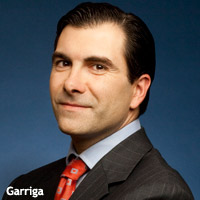 Are marketers bad at math?
Are marketers bad at math?
The question arose in the context of an ID Media-sponsored panel session Thursday that explored Hispanic media
issues and the growing Latino population in the United States.
A pair of startling statistics was presented at the opening of the session: 16% of the U.S. population is currently Latino,
while only 1% of U.S. marketing dollars are targeted toward reaching that population.
Why the disconnect? Participating panelists agree that marketers aren’t mathematically
challenged so much as they are risk-averse. But that fear of risk taking will hurt them in the future, as the Hispanic population is predicted to grow to one-third of the U.S. population by 2050, they
said.
“The future of your brands depends on it,” asserted Jose Garriga, vice president sales, Univision Sports. “Otherwise, you’re going to fail. It’s as
simple as that.”
Agencies share some of the blame for marketers’ dropping the ball in the Hispanic marketing arena, said Lance Rios, founder of Hispanic social media platform
Being Latino. He said that agencies frequently ignore requests for meetings to simply introduce his platform and explain how marketers might benefit from its use.
advertisement
advertisement
“Let us in the door --
we’re knocking,” he said. At the very least, Rios added, a quarterly update from Hispanic new media vendors would enable agencies to speak intelligently to their clients about the growing
array of Spanish-language, and importantly, bilingual platforms that are available to reach the Latino consumer.
Panel moderator Diana Bald, director of marketing at ID Media, the
Interpublic Group direct marketing specialist, asked if the panelists believed Hispanic media would ever achieve parity in marketing dollar allocation with mainstream media.
“It can only
go up,” replied Sophie Dabuzhsky, an account manager at Terra, the Latino-focused digital information and entertainment content platform. Whether there will ever be a one-to-one correlation in
the share of marketing spend she couldn’t say. But if one well-known and deep-pocketed brand were to “take the plunge” and make an adjustment, it could serve as a catalyst for others
to follow suit, she said.
“We’ll reach parity -- it’s inevitable,” insisted Ashley Moak, head of Hispanic consumer insights, Google. “Look at the diversity on
this panel,” she said. But to get there, it will take “evangelism from the inside, including [companies like] Google. You need to find internal champions at agencies or marketers that can
get the message to the top.”
Felix Sencion, CEO of the digital sports content platform Mundial Global, agreed. “Yes, it has to grow,” he said. He recalled a conversation
with a major advertiser a few years back who asked the company’s digital team to spend $100 million on various platforms, if they could. They could only spend $27 million.
“If only
we had that challenge,” he said. Hispanic media would not have a problem efficiently placing that kind of spend from a single advertiser. He noted that Toyota made a huge push in multicultural
marketing a decade ago that marked the beginning of the company’s ascent to the No. 1 carmaker in the world.